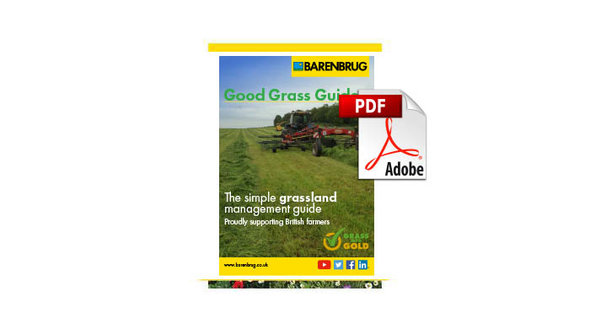The biggest threat to grassland productivity is complacency
Take time to get your feet into the fields…

Take time to get your feet into the fields…
Silage season is well underway across all of the UK with many in the South and West now looking at third cuts. Many beef and sheep systems and those in later areas in the North had big bulks although broken weather patterns when grass was at the ideal growth meant many were cut later than many would have liked resulting in slightly lower qualities. After winter 2017/2018, having full clamps and extra bales brings welcome relief.
Winter 2018/2019 was very kind with most reporting good volumes throughout the season and into spring for grazing platforms and decent silage yields where crops have been taken and, aside from the much drier conditions in the East, the biggest threat to grassland productivity throughout the UK is complacency. When there is plenty of grass, this is precisely the right time to invest in a reseed because there is a greater capacity to increase stocking density and free up the poorest field on the farm for reseeding.
The overall average reseeding rate in the UK is somewhere between 2% and 4%, with grassland productivity estimated to be as low as 55% of potential, so the scope for gain is vast. Take time to get your feet into the fields and walk them as well as thoroughly analysing silage results this spring to identify which of your fields is the poorest performing; this is the field you should target your efforts on, it will not necessarily be the oldest one. The Barenbrug Good Grass Guide is a free tool that can help you condition score your grass in order to prioritise which fields need immediate investment.
The Baillies from Grass into Gold farm Longlea in Lanarkshire fared very well in 2018. Being on a heavy farm, the dry year followed by a spring with less rainfall than average favoured them, but even so, their first cut yields were up in 2019. Silage had to be done in 2 batches as the Italian ryegrass was ready ahead of the perennial ryegrass-based swards. Charlotte Baillie comments “The main perennial crop did get a bit wet but was kicked out before lifting and there seems to be very little water coming from the pit. We also think that our extensive GPS mapping and subsequent applications of copious amounts of lime has been essential in improving our yields. We were able to get slurry and fertiliser on with ease after the first cut which was followed by plenty of rain to encourage regrowth, and the 2nd cut was done 6 weeks after the 1st with the aim to complete 3rd cut in another 6 weeks. The Italians are on a 5-week schedule.”
The Baillies are paying very close attention to details such as soil conditions and, particularly with the Italian ryegrass, growth stage to optimise the quality of the grass which is out of sync with the perennials. They have also layered the silage pits with a 2nd cut on top of the 1st to try and improve access to different qualities when feeding. Charlotte concludes “We are focusing heavily on our grassland management to allow us to maximise milk from forage and keep the purchased feed costs down. As things stand, we will have enough grass forage, so we don’t think we will need to do any whole crop, meaning we will have more home-grown grain and straw for winter too.”
Download your copy of The Barenbrug Good Grass Guide

Download the Good Grass Guide